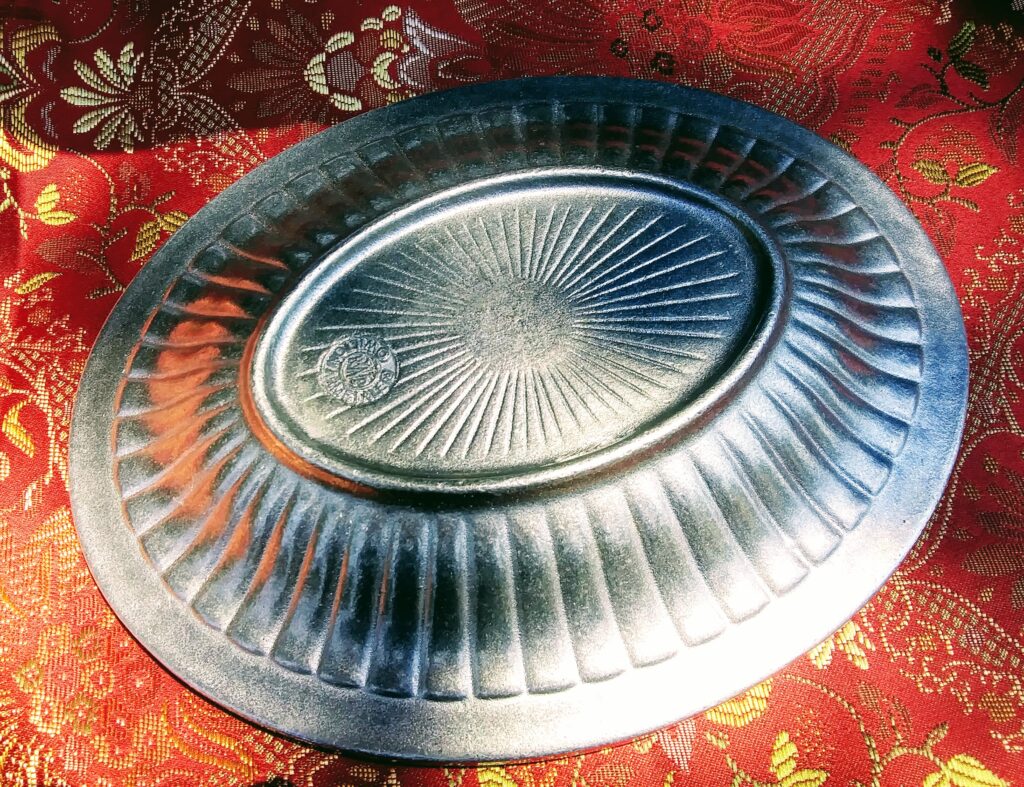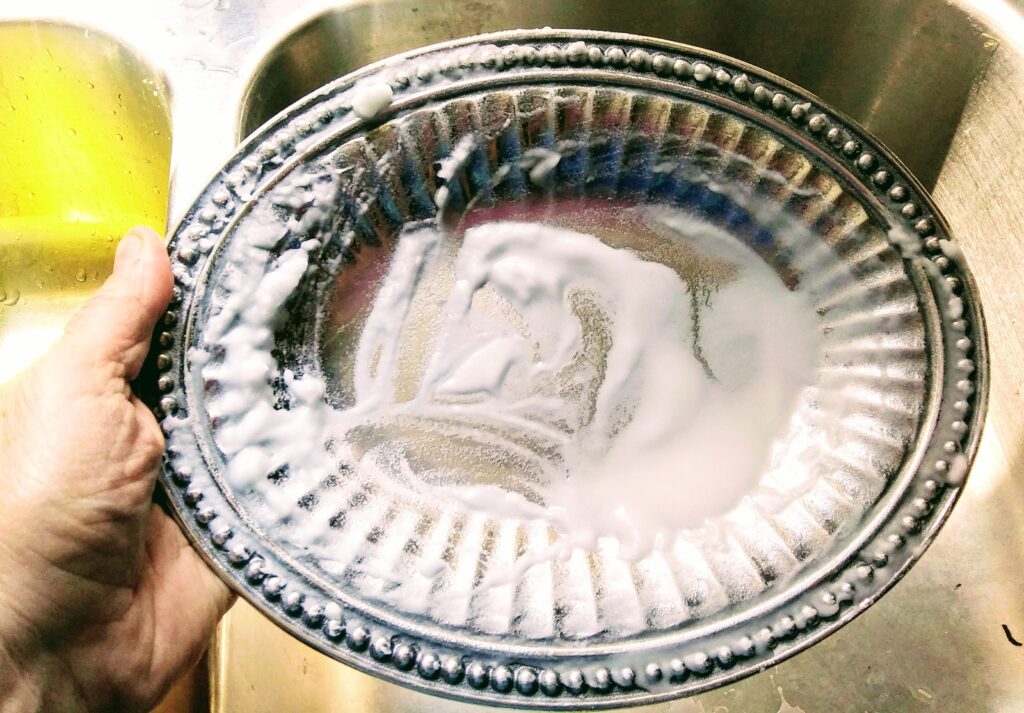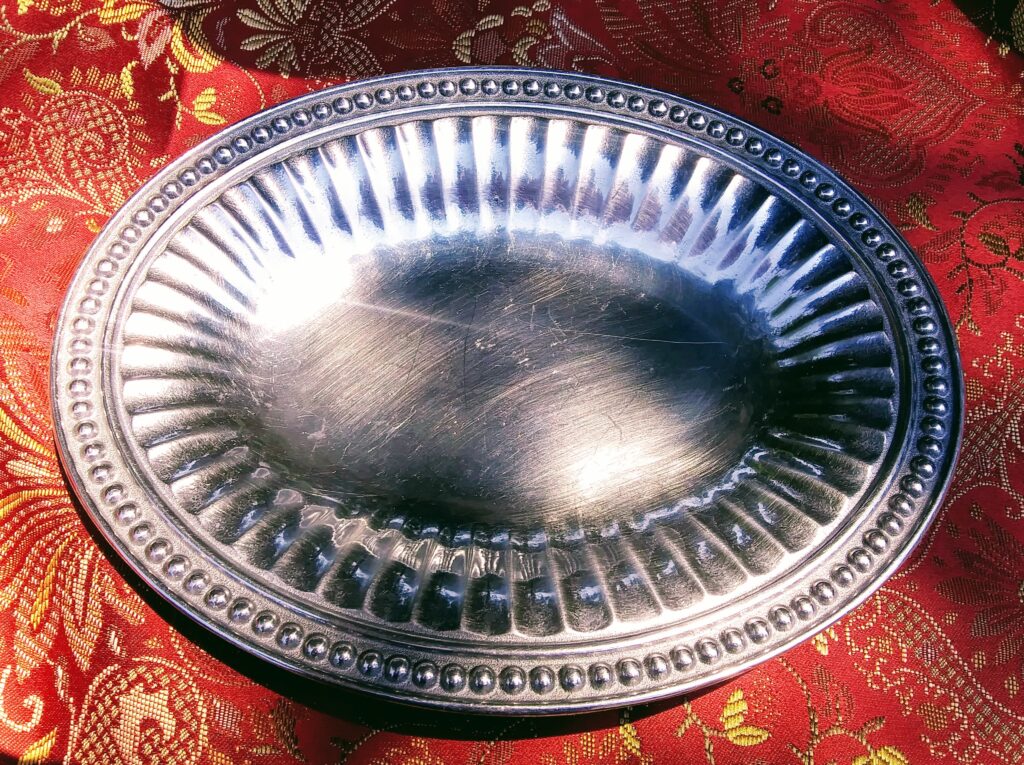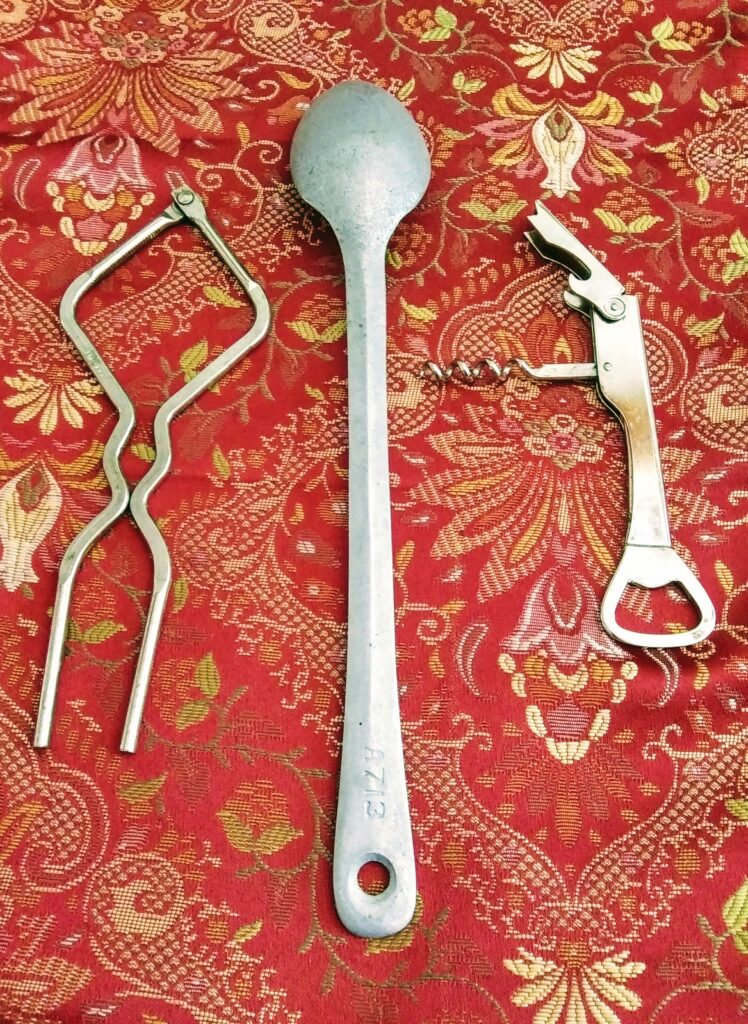Today I was out shopping in one of my favorite charity second hand stores and found some items that I wanted. Notice I said wanted not needed, as I am long out of space for new things. Of course, I made a donation to the shop on this visit but came home with more items than I donated.
The first thing I purchased was a small Wilton Armetale dish in the pattern of “Flutes and Pearls” for $4. The pattern was modeled on a candlestick base design by Karl Friedrich Schinkel from 1821.
When you look at the dish it does resemble flute glasses with round “pearls” encircling the top.
There is a stamp on the bottom with the name Wilton Armetale with large initials in a circle and the dish is very heavy.
The dish does have a few minor scratches on it but on the whole looks in pretty good condition.

At first I thought this dish was made out of pewter. With more research. I found that this dish is made out of a non toxic aluminum-based alloy which is trademarked and a Wilton company secret.
This type of cookware is designed and crafted by hand. It is able to withstand 1,000 degree Farengheight temperatures. With careful handwashing it should last a lifetime. However, if it accidently goes through the dishwasher, it will turn a darker color.
I looked online on how to shine up Armetale and the company brochure recommended using a paste of baking soda and water.

I’m using a paste of water and baking soda to scrub the dirty dish.
After lightly scrubbing the baking soda paste on the dish, I washed it with warm water and a mild dish detergent.
It actually looked much cleaner and I was able to remove most of the sticky price tag on it. I might use this for soap or a candy dish but we’ll see.
Short History of the Wilton Company
The history of the Wilton company goes back to 1892 when Ralph P. Wilton, Sr. started the company in Pennsylvania. He used an ancient process called sand molding which starts with an impression made in sand that is then filled with molten metal.
Wilton Jr., in 1963, then developed the formula for the unique aluminum-based alloy called Armetale. In 1969, the company produced a whole line of this popular product.
I noticed they seem to make a lot of bread and roll baskets. This metal keeps the food warm as it conducts heat.

In 2009, after 118 years of being in business, the fourth generation of Wilton Brothers sold the company to a Reading foundry owner. I wonder if that included the secret metal alloy formula/procedure?
I’m sure I’ll get some use of our my new plate. If not, it is always lovely to look at and will last forever.
Additional Purchases
The photograph below shows a few additional purchases. Although I was looking for old spoons for my prison project, I came home with a jar opener, a large aluminum basting spoon with A713 stamped on it and a nice Phoenix bottle opener made in Italy.
The large spoon has a hole in the end for hanging it up. I did some hunting around on the internet trying to find out what the A713 means on the large basting spoon but the best I can tell it is some type of aluminum alloy marking.
I’m curious about this, so I’ll keep looking around for more information for my Readers.

This photograph shows the jar opener, large basting spoon, and a bottle opener I recently purchased.
I’m going to try out the jar opener since I can never get bottles of pickles opened.
The bottle opener I am going to put in my car since I had a recent incident of not being able to open a soda bottle. I think that might come in handy again. It is also well made and should last for a long time.
Not sure what to do with the large spoon. I thought it was interesting and the price was right under a dollar, so we’ll see if I can find a home or use for it. Perhaps I’ll make it into a piece of fence art.
Anyway, I enjoyed shopping around a bit and purchasing these used items to give them a new life. My dollars also help the charity store raise money for their projects.
Question of the Day – Do you keep a bottle opener in your car?

